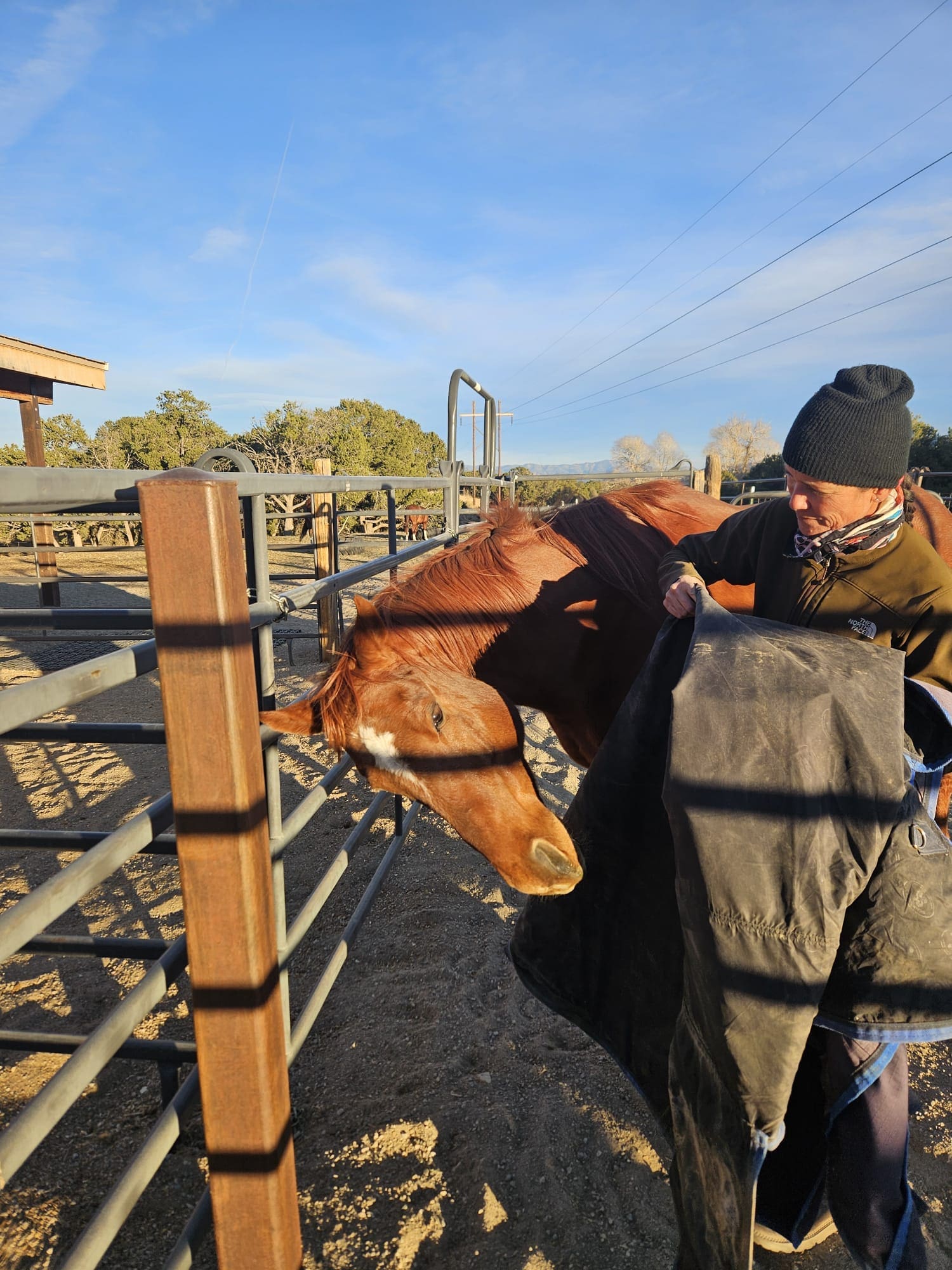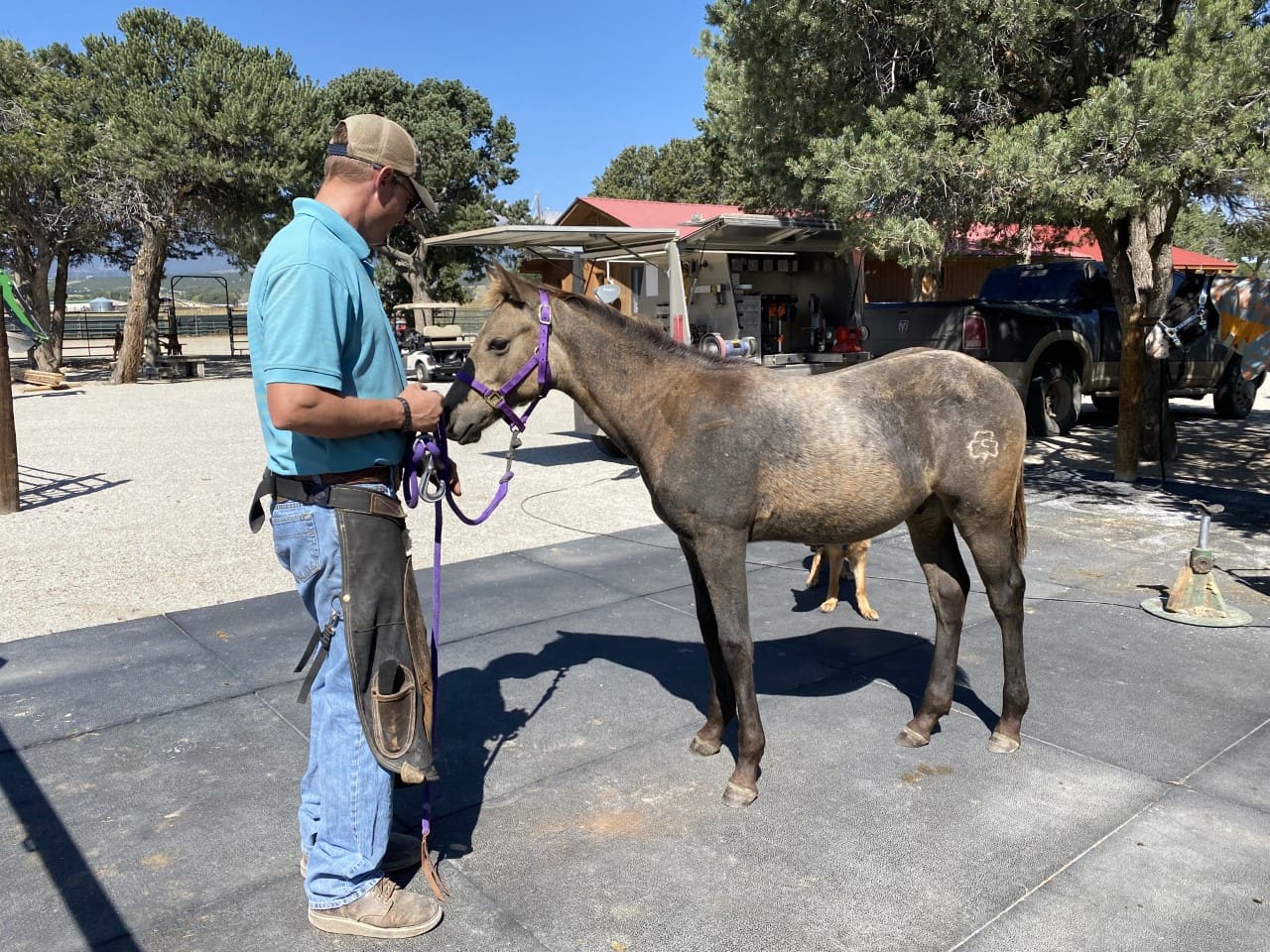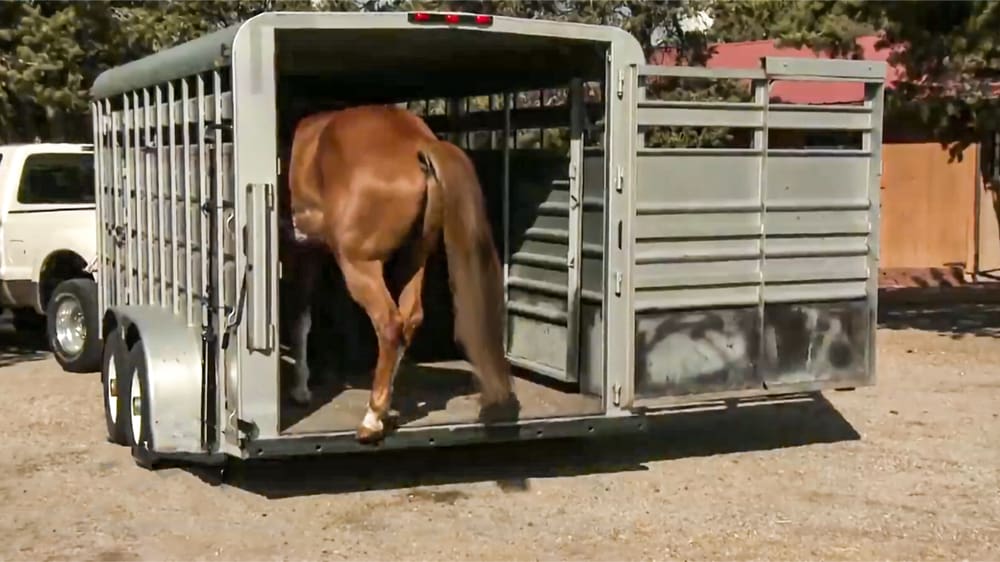Recently, I gave a training clinic with this very title at a horse expo. Since I do not travel with my own horses, I am reliant on the expo producers to find appropriate horses for my presentations. For this, I requested trained horses that had become disobedient, out-of-control, and prone to fits. Be careful what you wish for!
As usual, I first laid eyes on my demonstration horses and their riders about five minutes before the presentation. I was adjusting my microphone, my helmet and my stirrups and preparing to mount the horse I had ordered for myself to ride—a well-trained and experienced western horse, when an Appaloosa mare made her dramatic entrance at the arena gate.
She was stomping mad, threatening to rear and running all over the handler as the rider attempted to mount amidst this turmoil. The mare’s eyes were rolled back in her head and I’m pretty sure there was smoke coming out her nostrils.
By pulling the mare in a frantic circle around her, the rider was able to do a perilous mount-in-motion and miraculously landed squarely in the saddle, immediately jamming her feet into the stirrups. Clearly, they had all done this before. But as the rider took up the reins and the header stepped away, the mare made it very clear that she wasn’t going anywhere or doing anything. She was rearing (a blatant refusal to move forward), and stomping the ground. All this, while I mounted my horse and the announcer was introducing me to the audience of over a thousand people.
My mic went live as I was instructing the header to lead the horse to the far end of the arena and stay with the rider until the mare settled. My opening remarks to the audience, in the midst of all this drama, was that I was ambivalent about the title of this presentation. I knew everyone would have an idea of what “bratty” behavior is, which is why I picked the term. But the title seems to place blame on the horse, when anyone who has ever known bratty children can tell you, it’s not the child’s fault; it’s often the result of poor parenting.
In the case of the spotted mare, although her blatant disobedience may have been the result of poor handling in the past, we needed to get some stuff sorted out right away. As I coached the current rider, I explained to the audience what an obedient horse is: one that goes in the direction you ask, at the speed you dictate, without any argument. This mare was far, far from obedient.
I had the rider start turning the mare away from the gate and into the fence, constantly changing direction. This simple exercise can have a huge impact on a disobedient horse. First and foremost, it keeps forward motion going. And as this mare had aptly demonstrated when they tried to get her into the arena, forward motion is the basis of all training. If the horse won’t move forward, you cannot train it.
Changing direction also gets your horse in a more compliant and submissive frame of mind—it’s a technique horses employ when establishing dominance in the herd– controlling the horse’s direction by herding him one way, then the other.
And most importantly, when you change direction by always turning the horse away from the gate (or away from the direction she wants to go), it is reinforcing that you dictate the direction, not her. If you allow her to turn toward the gate, she is momentarily rewarded by getting a little bit closer to her objective. In short order, the mare began to settle down and go to work. Now it was time to work on the rider.
First, the rider needed to sit back, take a deep breath and relax! Riding difficult horses always leads to defensive posturing in the rider, which leads to defensive posturing in the horse. With horses, it is usually a good idea to sit back, take a deep breath and relax. Start riding your horse as if she is behaving normally, and she soon will. Ride her as if you think she is about to explode, and she will. This is good advice for all riders in all difficult situations.
Secondly, the rider needed to have much greater awareness of the horse’s motivations and actions, instead of just fighting with her. From the moment the mare laid eyes on the temporary arena built inside an enormous trade show hall full of thousands of people and hundreds of booths, she made it clear she wanted no part of it and was refusing to go inside. She had one goal—leave this place now! Understandable, yes, but unacceptable in a trained horse. Either you call all the shots or the horse calls them all; either you are the leader, or the horse is. It was up to the rider to take control.
It was obvious in everything the mare did—looking at the gate, veering toward the gate, whinnying at the horses outside the gate, speeding up when going toward the gate, balking when turning away. When you turn the horse toward the gate, she thinks she is getting closer to her goal and her antics are working. Every time you turn her away from the gate, you are controlling her direction and turning her away from her objective; her antics are no longer working and you are establishing more control.
Soon the mare was relaxing, putting her head down and becoming compliant while I talked about the most common mistakes riders make when faced with a fractious horse—mainly pulling back incessantly on two reins at the same time. This will cause fractious behavior faster than anything I know. When you want the horse to move forward, you must reach forward. When you want the horse to bend his neck and turn, you have to release the outside rein. How could something so simple, be so hard to do for a rider that is nervous and feels like she is losing control?
The rider did an excellent job of listening to my coaching, all the while she is just trying to stay on the topside of her fiery mare and get control of the situation—this in front of thousands of people who are forming their own opinions of her horse and her. Brave woman. Soon the mare was going straight and relaxed on a loose rein and we began to work on dictating the path more precisely, now that the mare was being cooperative.
About 75 minutes into the 90 minute clinic, the mare was doing so well that I looked around the arena to see what other challenge we could offer her. There was a tarp and a few ground poles, so I asked the rider to take the mare over the poles and next to the tarp to see if she would remain straight and obedient to the path the rider dictated. She crossed the poles just fine but as soon as she headed toward the tarp, the mare steamed up and became defiant. Turns out, earlier this day the mare had been in a trail obstacle clinic and in 90 minutes of fighting with her, they never got her over the tarp. With 15 minutes left, now was not the time to start a seemingly insurmountable challenge with this mare that was just now starting to work well. Fundamental horse training lesson– don’t start something you can’t finish and always end on a good note.
I told the rider, “Don’t point her in a direction that makes her think you are asking her to go over the tarp, but take her in an obvious line next to the tarp and insist that she goes straight. After 2 or 3 passes, the mare was walking obediently next to the tarp. Then an amazing thing happened. The mare began to look at the tarp as she obediently walked next to it. It was clear that she was drawn to it.
It was a defining moment. My horse and I sauntered over to the tarp and stood on it casually as I talked, trying to send vibes to the horse how great it was to be standing on the tarp. It was increasingly obvious that she wanted to go over the tarp and eventually, it was as if she couldn’t stop herself; she had to go over. And over she did, as the crowd erupted into cheers, spooking all the horses momentarily.
What timing! It was the end of my presentation and the mare had made an exceptional turnaround. I told the rider what I’d do if it were my horse— I’d get off, praise her like she just won the Olympics and lead her out of the arena. Leave on a high-note. She had been fighting with the mare for so long, that the mare had forgotten how great it felt to be a good horse. She needed to know how good it feels.
I ended my presentation with my head swimming. What just happened? And what can I learn from it? Once again a horse was teaching me something really important. And once again, it was a simple lesson and one I’ve learned from challenging mares before. Don’t pick a fight with a horse.
By asking the mare to stay obedient but not walk over the tarp, just next to it, we had taken away the fight. She’d been fighting about this tarp for some time, and fighting solely for the sake of winning. But it takes two participants to fight. Once we took away the argument, she was immediately onto a new line of thought. Then her willingness kicked in.
I don’t know what happened after the horse and rider left; I didn’t see them again. I wish I had the chance to debrief her and tell her what a great job she did and to let me know how things progress with her mare. But I’m certain she learned something and I am hopeful that she and her mare have a better understanding of each other now. I know I learned something. And I enjoyed every minute of it.
Enjoy the ride,
Julie
Please visit Goodnight’s sites for more information and training tips:
Julie’s website



